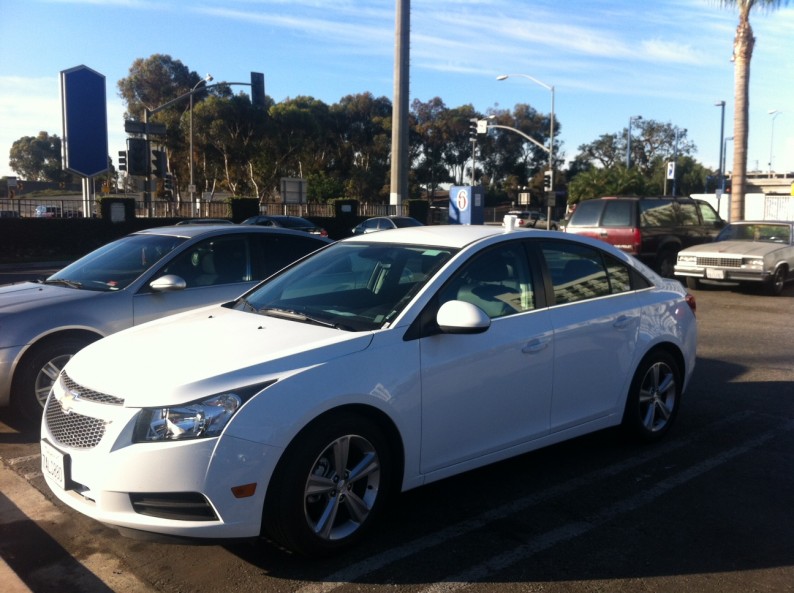Picture of my $12/day rental car in Los Angeles back in Jan’14.
1. Pick up on Thursday/Friday and Drop Off on Sunday/Monday to get a weekend rate.
I got the great car above for $12 a day from Firefly at LAX because I picked it up Thursday night and dropped it off Monday night.
If you do a 4 day rental or less (4 x 24 hour periods) you’ll get the weekend rate.
2. Don’t go over 24 hour periods.
Rental cars work on 24 hour periods. Plan your flights accordingly. Sometimes you can pay for an extra hour but most likely you’ll end up paying a whole extra day if you need the car for say 26 hours.
3. Book a weekly or monthly rate.
Rentals that are 5 – 7 days typically get charged at the weekly rate, meaning you get the best value if you rent for the full 7 days.
4. If you book a monthly rate in the US, pay for the car with you AMEX card.
If you’re a US Visa card holder, they’ll only cover Collision Damage on rental cars for periods up to 15 days domestically.
AMEX offer some options for 30 days, or even 42 days for some of their products. NOTE – double and triple check YOUR card policy. These tips are just intended as informational and info can change.
5. Which websites to try.
Check comparison sites like Kayak and Expedia. Once you’ve found a rate you like, check if it’s cheaper to book on the company’s website directly or if you get any extra flexibility this way.
Hotwire and Priceline (bidding) can also offer good deals, sometimes, if you don’t care about which company the car is from. Before finalizing your bid, check the cost of the insurances if you need to purchase any of these. To see the rates for the Liability Supplement, you’ll need to click through to the fine print. Try to not pay more than $13.99 a day. Even though this is really high, some companies charge $19.99 a day!
Before booking, check to make sure that booking via Priceline or Hotwire doesn’t void your credit card coverage.
6. Book a backup reservation.
Book a backup reservation. You typically won’t need to even input a credit card to get them to hold your reservation or there will be no cancellation fees. That way you have something acceptable locked in but you have the flexibility to try services like Priceline to see if you can find something cheaper.
This especially applies if you want to rent around the time of a holiday or popular event.
7. If you’re from outside the US, book through a UK site such as Thrifty Worldwide. This will allow you to book a package that includes the insurances.
You’ll need
- CDW/LDW (Collision and Loss Damage Waiver) to protect the car
- LIS (Liability Insurance Supplement) to cover if you damage property or hurt another person.
Your travel insurance will likely cover you for PAI (Personal Accident Insurance) which will pay your hospital bills if you crash.
Most US persons have the above covered through their credit card or personal auto insurance. If you purchase them al la carte from a US rental car website/company, they’ll likely double or triple the cost of your rental.
8. Non-owned liability insurance policies.
If you rent frequently and live in the US but don’t have a car, check out a non-owned liability policy. For example Travelers Insurance offer an option and so Geico. These policies are for people who don’t have continuous use of a vehicle.
You can reduce your premium with Geico if you do a defensive driving course (can be done online) and if you sign up for the Freelancers Union (free and gets you a discount). Just say the Freelancers Union referred you when you call.
9. Save fees by avoiding airport bookings.
If you’re going to be renting the car for a longer period, consider renting it at a non-airport location. They typically have lower fees. This may or may not be worth the hassle.
10. Check into local companies.
Local companies sometimes have great rates, especially for longer rentals, and may include some insurance in the rental.


Leave A Comment